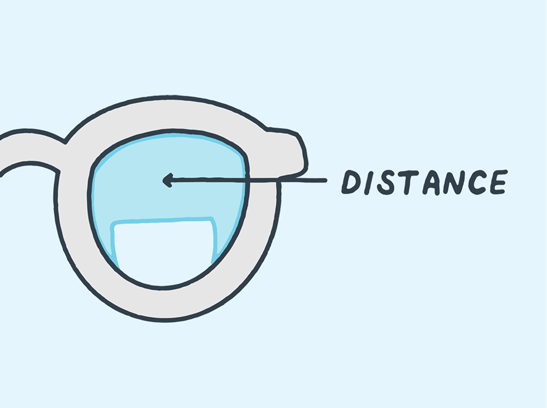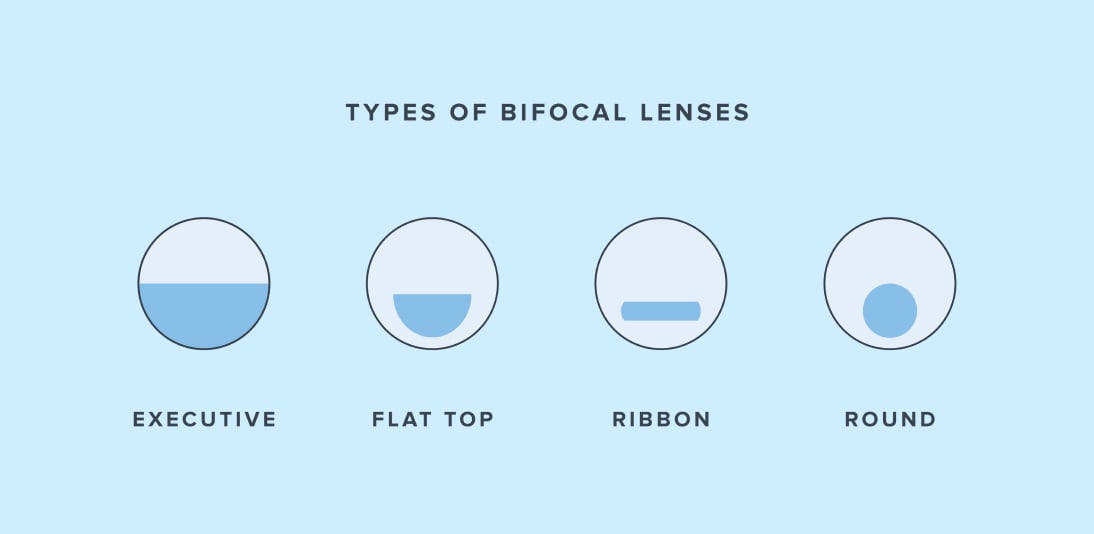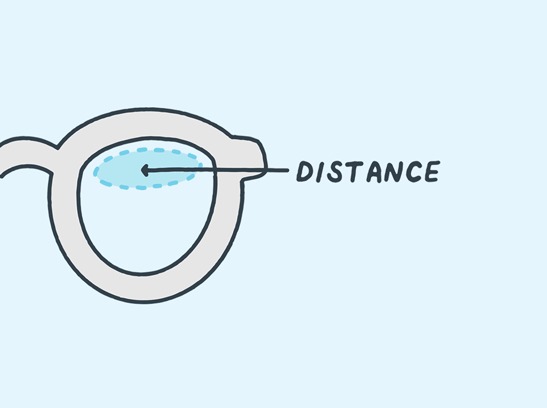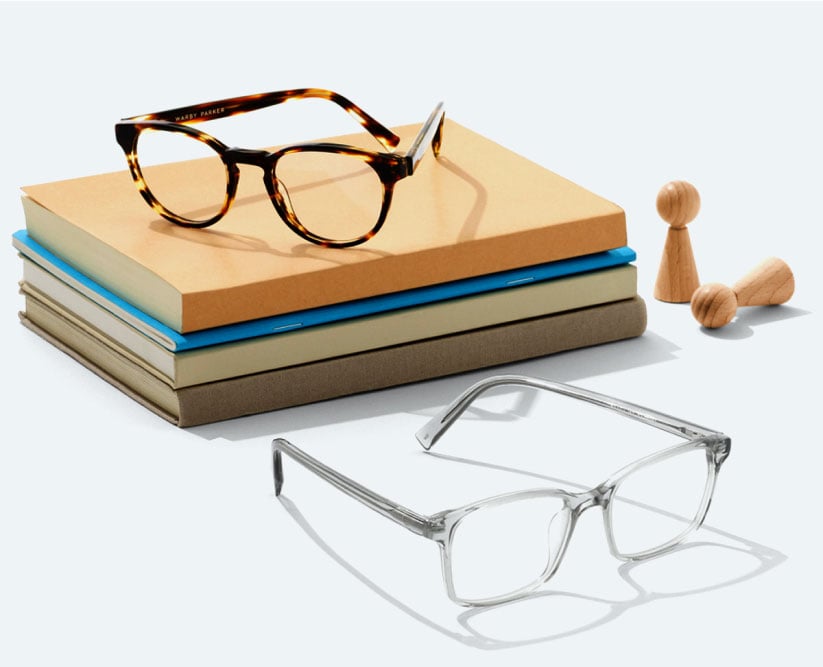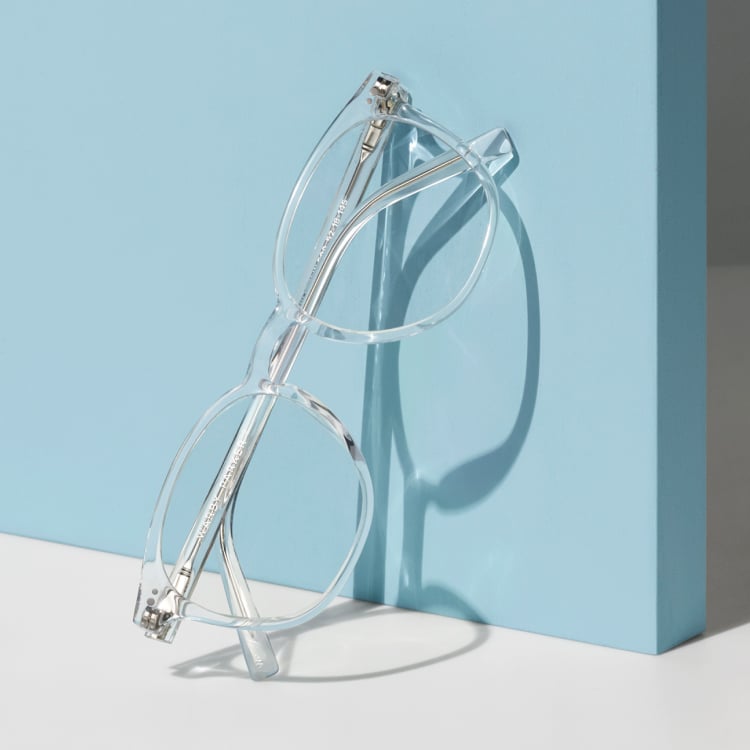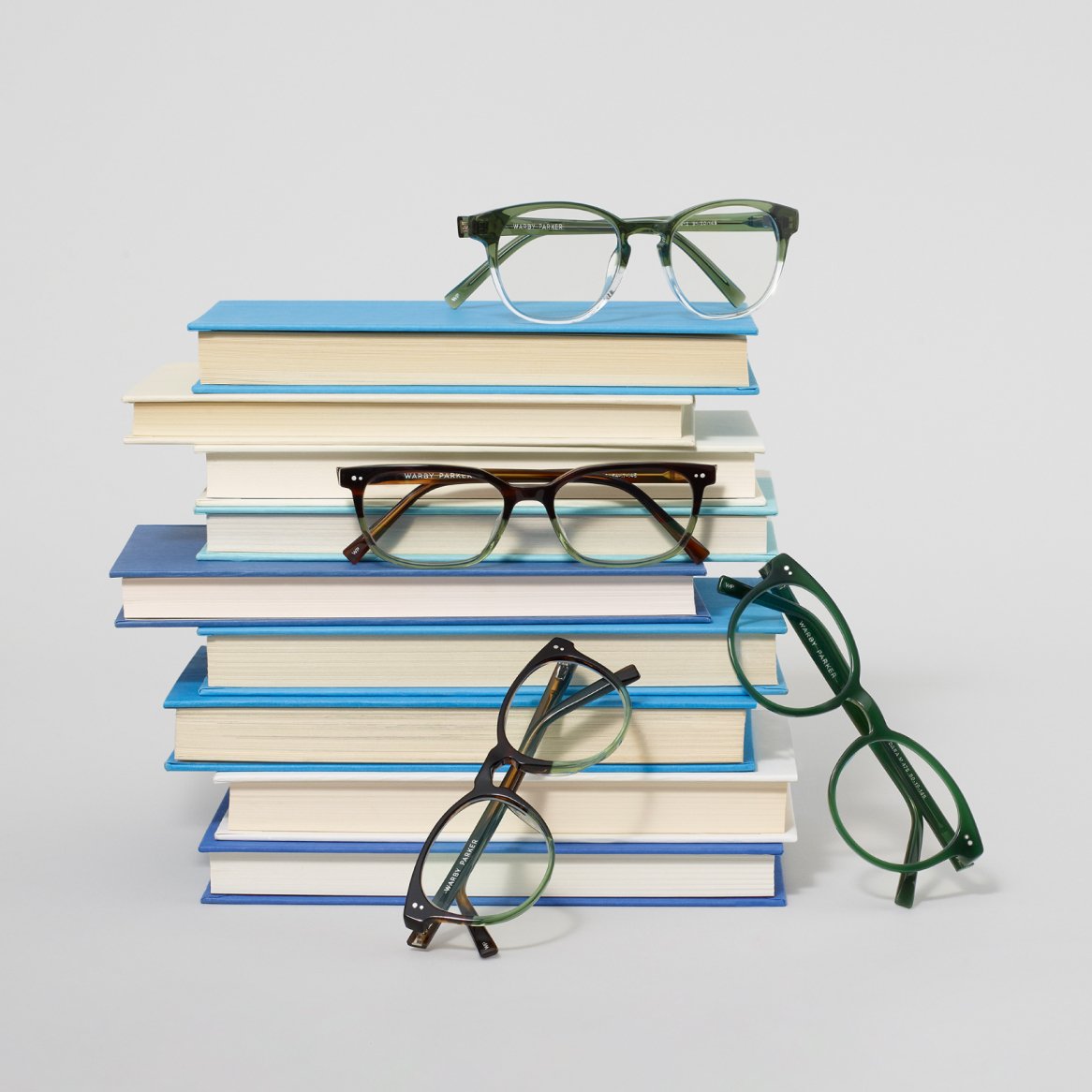Bifocals are a type of eyeglasses that feature two different optical powers in one lens. The top part of a bifocal lens corrects distance vision, while a smaller portion at the bottom of the lens corrects near vision. When looking closely at bifocal lenses, you can see a line where these different viewing zones meet.
In this article, we’ll take a closer look at this type of eyewear, including how they work and who might use them. We’ll also cover some modern-day alternatives to bifocal glasses.
How Do Bifocals Work?
Because a bifocal lens is separated into two distinct sections, you can shift your focus from far away to close-up objects or text and still see clearly.
The viewing zone for near objects is at the bottom of the lens because people tend to look down when they read or do tasks that require close viewing. For example, pretend you’re reading a book, sewing by hand, or texting on your phone. Notice where your eyes focus. (Downward, right?)
Who Invented Bifocals?
Benjamin Franklin invented the bifocal lens in 1784 after he noticed his eyesight was declining. He was having difficulty seeing up close and far away, but eyeglasses at the time couldn’t solve both problems simultaneously.
Using the lenses from two different pairs of glasses, Franklin split each lens in half and combined them to create “double spectacles,” or what are now called bifocals. A huge milestone in the evolution of eyeglasses, indeed.
Types of Bifocal Lenses
Fast forward to today. Now you can get a few different types of bifocal lenses (“bifocal segments” is actually more accurate to say)—each type has a different shape to the near-vision zone of the lens. Here are some of the most common types:
- Executive: The near-vision zone of the lens covers the full bottom half of the lens. This type of lens is also called E style (“E” for “executive,” of course) or Franklin style (because this style resembles the late Benjamin’s invention).
- Flat top: The near-vision zone of the lens resembles a half moon. This style is also called D-segment because the shape of it resembles the letter “D” turned on its side.
- Ribbon segment: The near-vision zone is a narrow rectangular shape.
- Round segment: True to its name, this type of lens has a round-shaped near-vision zone.
When Are Bifocal Lenses Prescribed?
Bifocal eyeglasses are most often prescribed for people who have trouble seeing both close up and far away. Multifocal glasses, such as bifocals and trifocals, are an alternative to switching back and forth between prescription distance glasses and reading glasses.
Bifocals are commonly prescribed for people over the age of 40, as that’s when presbyopia tends to set in. Presbyopia is also sometimes referred to as age-related farsightedness. With age, the eye’s lens becomes less flexible and has a harder time focusing light correctly on the retina. That’s why it becomes difficult to read or focus on close objects without things looking a bit blurry (as was the case for Mr. Franklin).
Besides presbyopia, bifocals are sometimes prescribed for other purposes. For instance, bifocal glasses may be prescribed for children with amblyopia (sometimes referred to as lazy eye) or accommodative esotropia (a type of strabismus, or inward-turned eye). In these cases, the near-vision zone of bifocal lenses can help support the child’s focusing skills and aid in reducing or preventing the weaker eye from turning inward.
Progressives: A Modern Alternative to Bifocals
Although bifocals can be beneficial for those who have difficulty seeing up close and far away, sometimes the transition in the lens can be uncomfortable or cause slight disorientation. Plus, the visible line across a bifocal lens may not be aesthetically pleasing to some.
Luckily, we’ve come a long way since Benjamin Franklin’s bifocals. Today, we have progressive glasses. Progressive lenses provide a seamless transition (i.e., with no visible lines) between three primary vision zones—near, intermediate, and far.
Your Eye Doctor Will Help You Find the Right Glasses
After a comprehensive eye exam, your eye doctor will recommend the best type of glasses for your vision and needs. And then comes the fun part: choosing your new frames.


